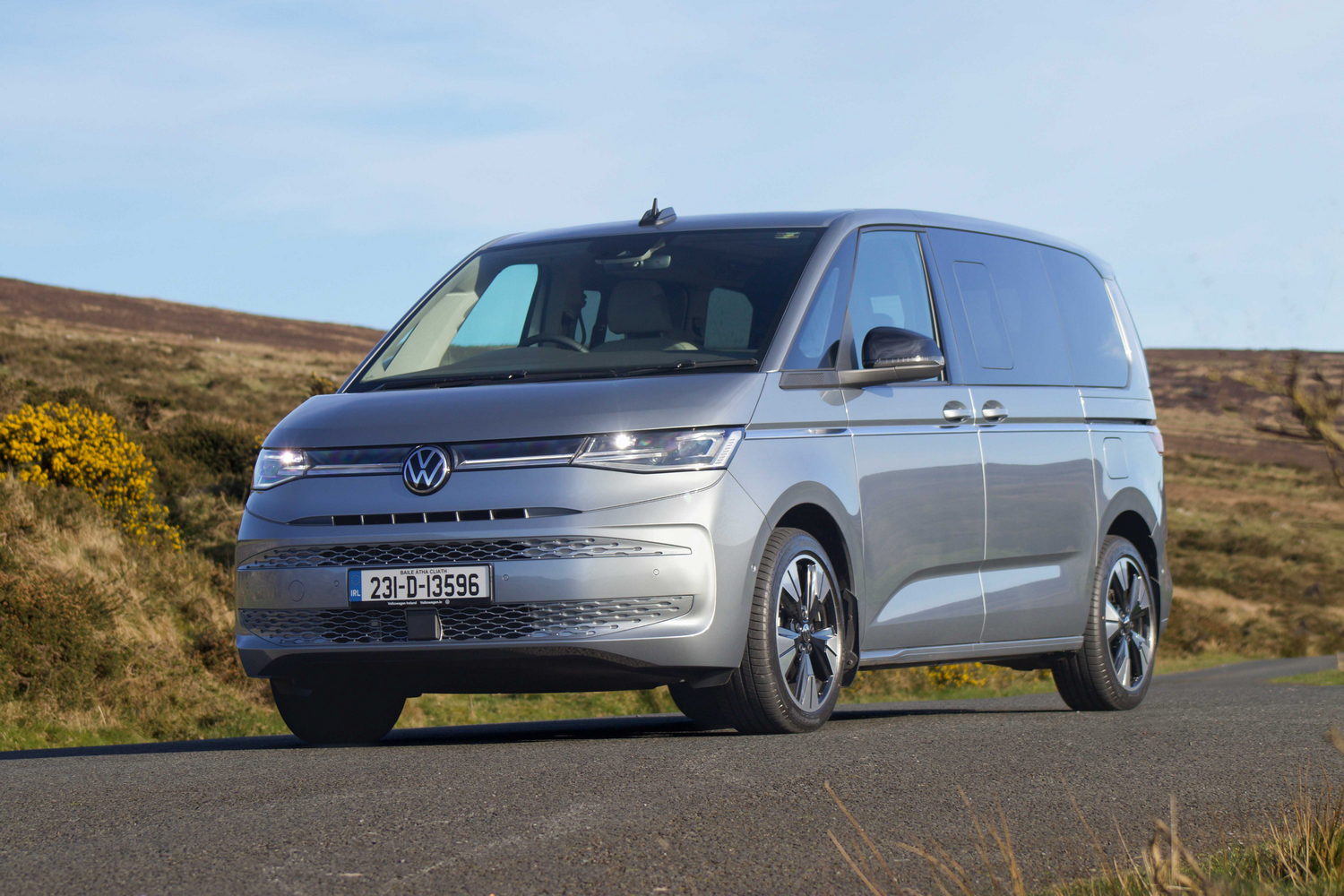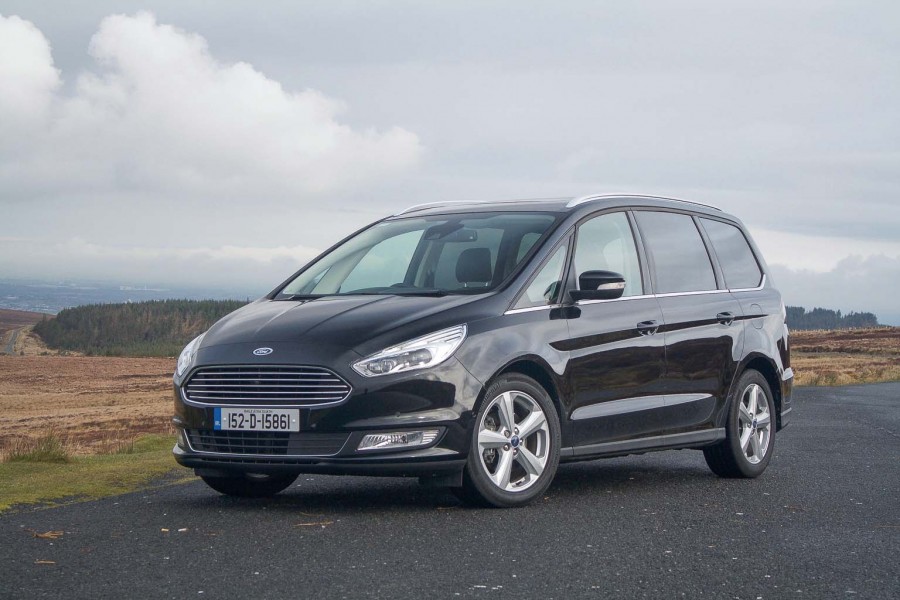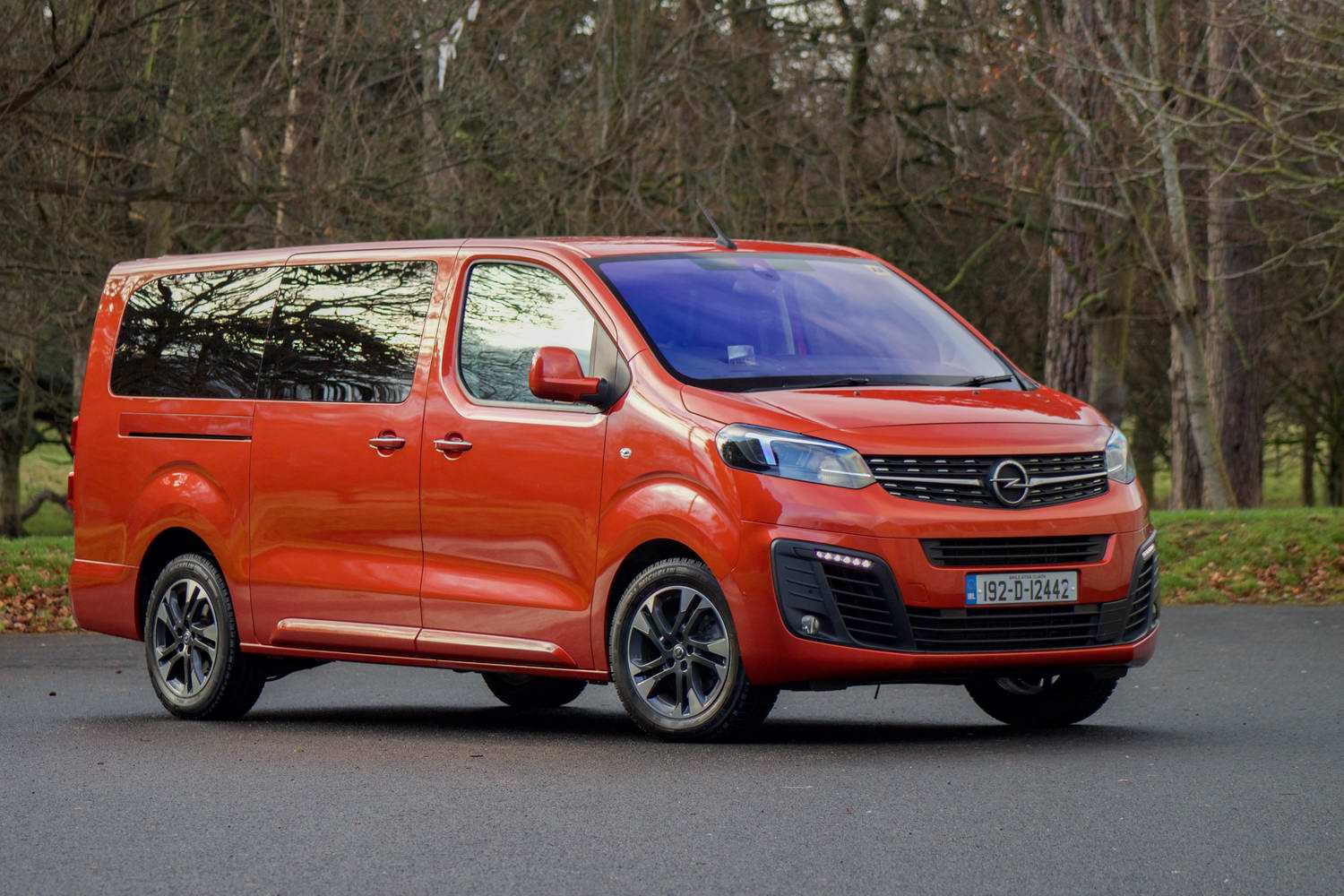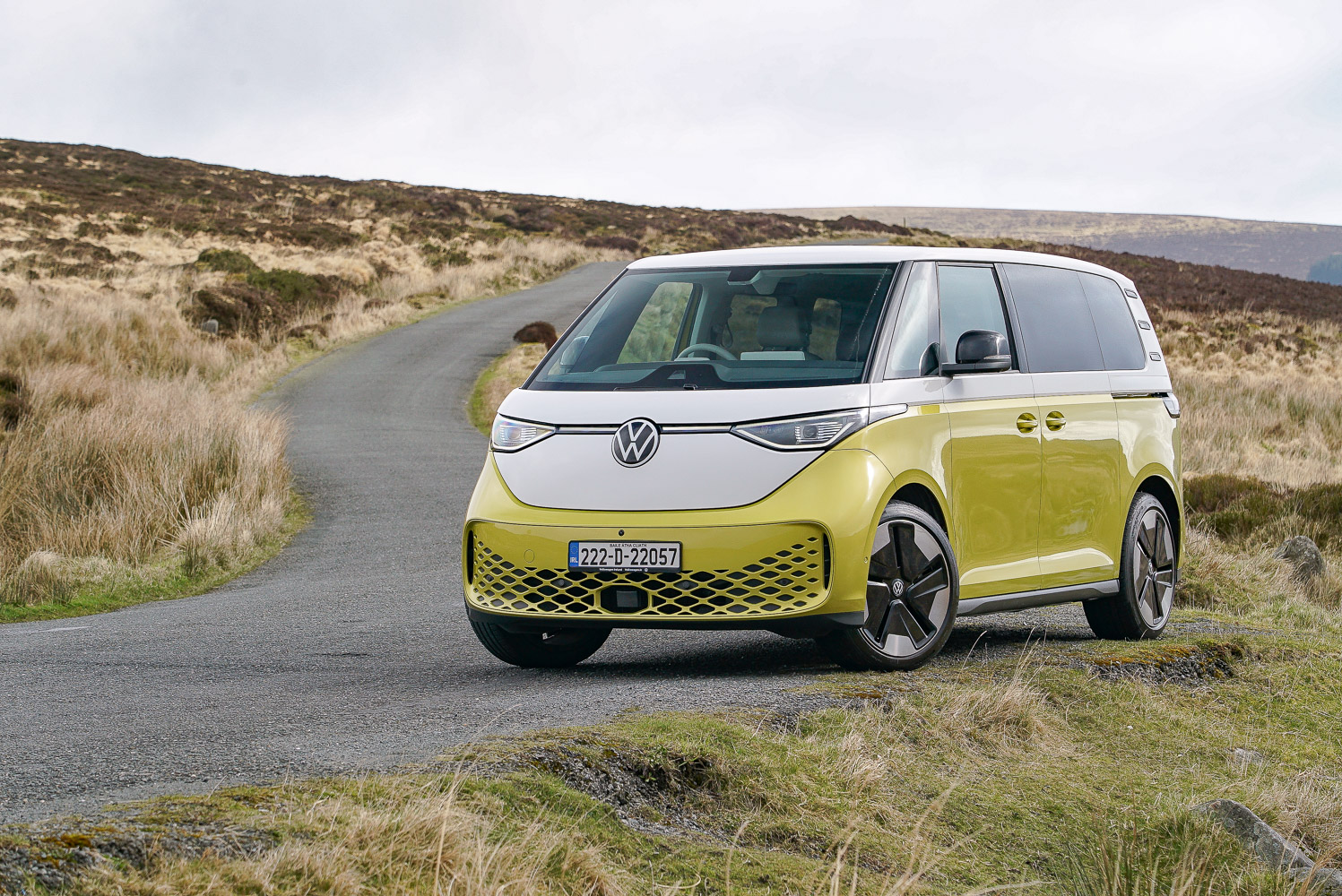Volkswagen Multivan overview
The MPV market has seen a decline in recent years, thanks to the car manufacturers abandoning the people carrier sector to concentrate on SUVs. But the Volkswagen Multivan could be the car to revive interest in the class. While many current MPVs on sale in Ireland are now van-based models, the Multivan doesn't have a van equivalent - it's a replacement for the T6 Caravelle, but the van on which that model was based, the T6 Transporter, continues in production.
You'd be forgiven for not being aware that the Multivan exists at all. It's a product of Volkswagen Commercial Vehicles, not the passenger car division, so it's sold via VW's van centres - step into a Volkswagen car dealer to buy one, and there won't be one to be seen. That's a shame, because as we'll see, the Multivan offers plenty of features that make it the most family-friendly model that the company offers.
The Volkswagen Multivan model range
Irish prices for the Volkswagen Multivan start from €59,720, and there's a single powertrain option on offer. In other markets, petrol and diesel engines are available, but here we just get the 218hp eHybrid plug-in hybrid set-up. This is the same drivetrain seen in the Passat GTE, comprising a 1.4 TSI petrol engine, an electric motor, 13kWh lithium-ion battery and a six-speed DSG twin-clutch gearbox sending drive to the front wheels.
There are two body lengths available, which Volkswagen calls SOH and LOH. The latter is 200mm longer, with all of the extra length given over to the rear overhang. All versions of the Multivan feature twin sliding side doors and a top-hinged tailgate at the back.
That €59,720 starting price gets you behind the wheel of the standard-length base model, which is just badged Multivan. This comes with five seats, and upgrading to seven seats costs €920 extra. On top of that, the long body (which is a seven-seater as standard) is €1,300 extra.
Standard equipment on the Multivan includes alloy wheels (starting at 17 inches in diameter, with options up to 19 inches in size), full LED lights front and rear with automatic activation, air conditioning, two seats up front with armrests, storage drawers under the rear seats, a 10-inch touchscreen infotainment system with voice control, wireless smartphone connectivity and app functions, twin USB-C sockets on the dashboard, digital dials, keyless starting, rain-sensing wipers, front and rear parking sensors, cruise control, lane assist and auto emergency braking with pedestrian and cyclist detection.
With all this included, it's clear that the Multivan isn't your typical van-based MPV, and moving to one of the higher trim levels moves it even further upmarket. The rest of the range comes with seven seats as standard, with Life spec costing €2,295 more than the standard seven-seat Multivan, and the Long model €2,610 extra. They add equipment including power latching for the sliding doors and tailgate (so you don't need to slam them shut), online connectivity for the infotainment, extra sound deadening, 30-colour LED interior lighting, dynamic light control with auto main beam and poor weather mode, two-tone seat fabric and a laminated, heat- and sound-insulating windscreen.
For an extra €11,765 Style trim really raises the luxury. There are 18-inch wheels for starters, plus matrix LED headlights with an extra light bar across the nose, one-touch power opening and closing for the sliding doors and tailgate, three-zone climate control (driver/passenger/rear compartment), an additional four USB-C around the rear cabin (one in each sliding door, and one on either side of the rearmost row below the windows), heated front seats, tinted rear glass, a wireless phone charging tray, navigation for the 10-inch touchscreen, adaptive cruise control, dynamic cornering lights, ArtVelours microfleece seat trim, sliding windows in the side doors, park assist and a sliding centre console between the front seats that can be slid back and turned into a table.
Volkswagen is also offering the Edition model at the moment. This limited-run variant slots between the Life and Style, so gets all the equipment from the former, but also adds tinted windows, wireless phone charging, the ArtVelours seat trim and black 18-inch alloy wheels. Prices are €68,910 and €70,475 for standard and long versions of the Edition, respectively.
The Volkswagen Multivan interior
The bare numbers tell you what you need to know about the amount of space the Multivan has to offer. The square body offers up to 3.3 cubic metres of space in two-seat mode (or 3.5 cubic metres for the long model), but there's much more to the Multivan than simply vast cargo figures. That cabin is a lot more upmarket and luxurious than you'll find in any van-based MPV, and this goes a long way to justifying the Multivan's price. In fact, while the Multivan name is one that has been used by van-based MPVs in the past - which is why it's used again here - the model is upmarket enough to justify removing the 'van' epithet completely.
The five seats in the back of the seven-seater are fitted in a 2-3 configuration, with two captain's chairs in the middle row and three-abreast seating in the back. However, all five seats are individual chairs that slide back and forth on aluminium rails that are set into the carpeted floor. The seats themselves are comfortable, and they slide and fold depending on your needs, or you can remove them completely allowing you to have a multitude of configurations. For example, during our time with the Multivan, we removed two of the three rearmost seats - and the low-set parcel shelf that is also fitted - to place three bicycles inside while still having room for three passengers. Or, if you're carrying four passengers in the back, you can fold the middle seat of the rearmost row to make use of the plastic table with twin cupholders that are moulded into the seatback.
Our top-spec Style model featured the movable centre console, which can either be set low between driver and passenger, or moved back where the middle-row passengers can use it. We preferred it in that position as it can't be slid far enough forward to get out of middle rear passenger's way, while it can only be raised when it's positioned back there, where the slide out picnic tables and cupholders are easier to use. This also means front-seat passengers are able to walk into the back of the Multivan without having to get out of the car.
There's enough storage up front that you don't really need the centre console moved forward anyway. There's lidded storage on top of the dashboard, a small upper glovebox to the left of the main touchscreen, then a proper glovebox beneath that, while the wireless phone charging shelf, two USB-C sockets and 12-volt connection are located beneath the touchscreen. The Multivan's drive-mode selector is located high on the dashboard to the right of the touchscreen, and this makes space further down on the centre console for twin fold-out cupholders with an extra storage tray behind. And if that's not enough, there are twin storage shelves in the front doors, with the lower ones offering very deep pockets for stuff such as bottles and the handy litter bins that VW fits.
In the back, the sliding doors also have twin storage shelves, with a USB-C connector fitted on both sides, while the windows have sliding sections that open manually. At the very rear, the window sills feature two more USB-C sockets, and there are cupholders, too. When three-zone climate is fitted, the controls for the rear rows are mounted in the roof, just ahead of the middle row. Our car also featured a panoramic glass roof, and while this added to the spacious feel inside, we would've liked window blinds to completely shelter the interior from the sun.
Wherever you sit in the Multivan, there won't be any complaints about the space on offer. Head- and legroom are generous in every seat, and the chairs are comfortable, too. If you're struggling to fit everything in, then the long model is a better option if you are going to be carrying luggage as well as passengers.
The Volkswagen Multivan PHEV driving experience
While the Multivan's cabin isn't very van-like to sit in, the tall driving position will be familiar to anyone that's been at the wheel of a medium-sized commercial vehicle. No passenger car short of a Range Rover offers the same clear view of the road ahead, although there is a vast dashtop that sprawls out in front of you before the stubby bonnet takes over - a forward-facing camera would be a neat addition to help judge exactly where the front of the Multivan is when parking. And while the A-pillars have quarterlight windows within them, there are some blind spots to contend with.
On the move, the Multivan is quite a relaxing car to drive. There's not much in the way of road or wind noise, and the eHybrid model only really makes any noise when relying on the petrol engine to accelerate. The Multivan is quite heavy, though, so this just encourages you all the more to take things easy so that your drive is relaxed.
As with any plug-in hybrid, the kind of fuel economy you get will depend entirely on how often you charge the battery. But to give you an indication of worst-case scenarios, we saw the Multivan return around 7.3 litres/100km over a long journey when the battery was completely flat. Using the engine to recharge the battery - not the best use of efficiency by any means - saw this increase to 8.1 litres/100km.
Volkswagen fits plenty of tech to help you maximise efficiency, though. There's the option to use hybrid or full-electric modes (as long as there's enough charge in the battery), while the car flashes up advice on the dials when to back off the accelerator for upcoming junctions or speed limit changes. This system works a treat if you go along with it, and often you'll barely need to use the brakes. It mixes friction and regen braking brilliantly, too.
Our verdict on the Volkswagen Multivan PHEV
The Volkswagen Multivan is a brilliant family car. Yes, it looks expensive in the guise tested here, but you certainly won't feel short-changed because it's designed to carry passengers exclusively, so it feels a step above most van-based cars. It's far more versatile than any SUV that purports to be family-friendly, too. Our only question is why it's not available on the VW passenger car website? Many buyers might never know that it exists, since it's only offered on the commercial vehicle site.













































